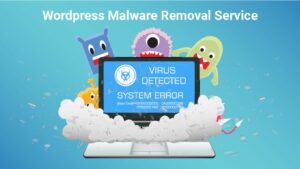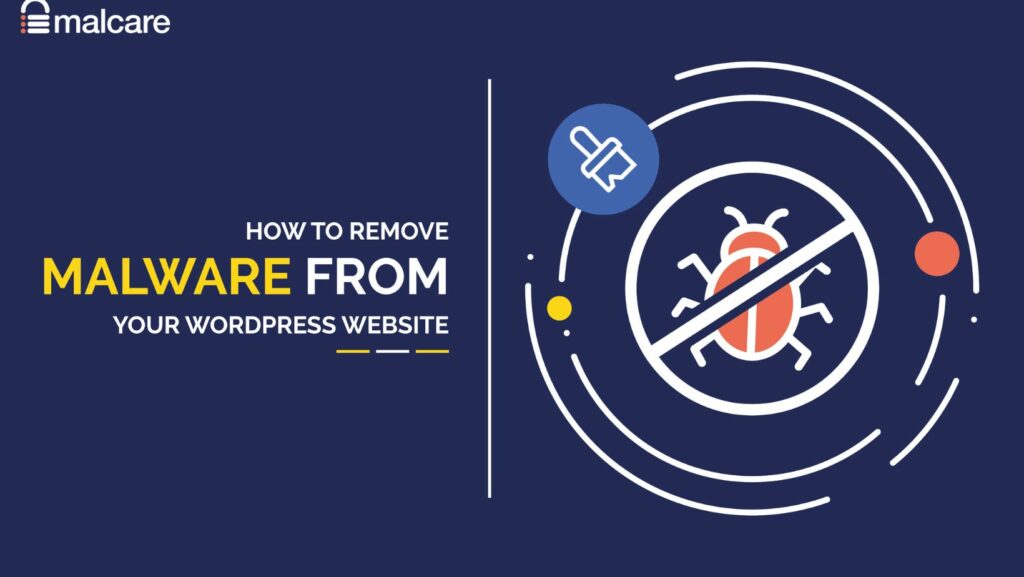WordPress Malware Removal
 WordPress websites are vulnerable to malware attacks, posing a significant threat to site security and functionality. When a WordPress site gets infected with malware, it can lead to severe consequences, including data breaches, blacklisting by search engines, and damage to the site’s reputation. In such instances, swift and effective malware removal is crucial to restore the website’s integrity and protect its visitors.
WordPress websites are vulnerable to malware attacks, posing a significant threat to site security and functionality. When a WordPress site gets infected with malware, it can lead to severe consequences, including data breaches, blacklisting by search engines, and damage to the site’s reputation. In such instances, swift and effective malware removal is crucial to restore the website’s integrity and protect its visitors.
In this article, readers will discover essential tips and techniques for WordPress malware removal. From identifying common signs of malware infection to implementing best practices for cleaning up the site, this guide will equip website owners with the knowledge needed to combat malicious attacks effectively. By following these strategies, site administrators can safeguard their WordPress websites against potential threats and ensure a safe browsing experience for users.
Understanding WordPress Malware
Types of Malware Commonly Found in WordPress
Malware targeting WordPress sites comes in various forms, each with its unique way of compromising website security. The common types of malware found in WordPress include:
- Backdoors:
- These malicious scripts allow hackers to bypass normal authentication and gain unauthorized access to the site.
- Pharma Hacks:
- Often seen in WordPress sites, these hacks inject spammy content related to pharmaceutical products, damaging the site’s reputation and SEO rankings.

- Malicious Redirects:
- Malware that redirects site visitors to harmful or irrelevant websites, negatively impacting user experience and possibly leading to blacklisting by search engines.
- Drive-by Downloads:
- Automatically download malware onto a visitor’s device without their consent when they access the infected site.
- Data Theft:
- Malware can extract sensitive user data, such as login credentials or financial information, leading to identity theft or financial losses.
- SEO Damage:
- Malware-infected sites may be injected with spam content, leading to a drop in search engine rankings and potentially getting blacklisted.
- Website Defacement:
- Malicious code can alter the visual appearance of your site, displaying unwanted content or messages to visitors.
- Performance Issues:
- Malware can consume resources, slow down your site, and create downtime, impacting user experience and site functionality.
Signs of Malware Infection in WordPress
Unexpected Website Behavior
Websites infected with malware may exhibit unexpected behavior that differs from their normal functioning. Users might experience random redirects to suspicious sites, pop-up ads appearing without clicking on anything, or unexplained changes in the site’s layout or content. If visitors report unusual activities or if the website owner notices unexplained modifications, these could be indicators of a malware infection.
Malware infections can significantly impact a website’s performance, causing it to slow down or crash frequently. If a WordPress site experiences a sudden decrease in loading speed, responsiveness, or overall performance, it could be due to malicious code running in the background. Website owners should monitor the site’s performance regularly and investigate any unexplained dips in speed to detect and address potential malware infections promptly.
Steps to Remove Malware From Your WordPress Site
 Regularly backing up your WordPress site is crucial in the event of a malware attack. By securing a clean backup, one can restore the site to its pre-infected state quickly. It’s vital to store backups in secure locations, such as cloud storage platforms, external hard drives, or dedicated backup services. Implementing automated backup solutions can ensure that backups are created regularly without manual intervention. Verify the integrity of backups periodically to guarantee they are viable for restoration.
Regularly backing up your WordPress site is crucial in the event of a malware attack. By securing a clean backup, one can restore the site to its pre-infected state quickly. It’s vital to store backups in secure locations, such as cloud storage platforms, external hard drives, or dedicated backup services. Implementing automated backup solutions can ensure that backups are created regularly without manual intervention. Verify the integrity of backups periodically to guarantee they are viable for restoration.
Manual malware removal involves thorough inspection of WordPress files, databases, and directories. Start by accessing the file system through a secure FTP connection or hosting file manager. Scan files for suspicious code snippets, unfamiliar files, or unauthorized modifications. Check the integrity of core WordPress files and remove any malicious code injected into them. Explore the database for potential malware scripts or unauthorized users. After identifying malware, delete infected files and quarantine suspicious ones. Manually removing malware requires caution to prevent unintended damage to site functionality.
Using WordPress Malware Removal Plugins
WordPress offers a variety of malware removal plugins designed to simplify the detection and removal process. Plugins like Sucuri Security, Wordfence Security, and MalCare are popular choices for scanning, identifying, and eliminating malware from WordPress sites. Install a reputable malware removal plugin from the WordPress repository and follow the plugin’s instructions to scan the site thoroughly. Utilize features like malware scanning scheduling, real-time threat detection, and security hardening to enhance site protection. Regularly update the plugin to access the latest malware detection capabilities and security enhancements.

